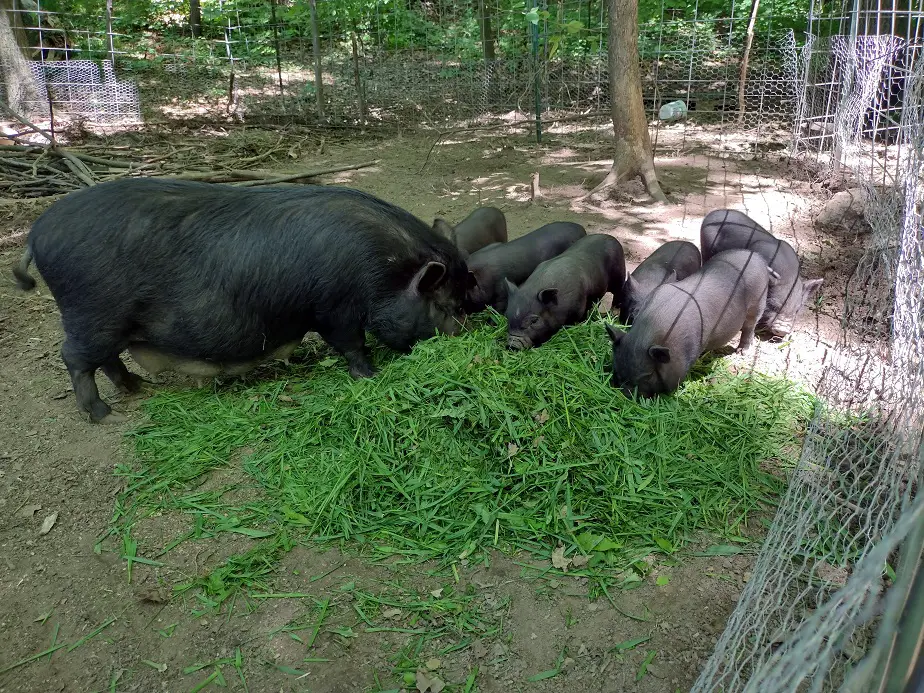We got into breeding our pigs as a way to be more self-sufficient. It’s made our pigs significantly cheaper to raise and It’s not too hard.
To breed pigs, simply introduce an appropriately sized boar to a sow who is ready to breed. The animals will do the work. It’s smart to leave them together for 48 hours to ensure successful breeding. A ready sow will be flagging and holding a boar’s attention. Pigs are bred after 5 months of age.
Let’s look into the concerns and care around breeding and rearing pigs.
When are Pigs Ready to Breed?
A boar can breed at any time but a sow will only accept breeding at the end of her estrus cycle. The entire estrus can last a week and she will be breedable for the last 48 hours. Sexually mature sows will estrus once a month, and it’s physically and behaviorally evident.
Sows will usually enter their first estrus between 3 and 4 months old. Upon entering estrus, sows become more vocal, often squealing loudly. Their behavior will change and they usually become more active and rambunctious. As the menstrual discharge clears, the sow will become quite submissive.
Sows will often back up against the fence of a boar’s pen when ready. This is called flagging or presenting. A sow may present to any dominant figure, including you as the pig keeper. Generally, the interest and unrest of the boar is your best indicator of a sow being ready.
Boars may become quite belligerent and work hard to overcome fencing to get to a ready sow. That’s a sure sign to let them together. It’s smart to put the boar into the sow’s pen. That seems to follow better with the natural instincts of a pig, and it seems to match up with their social structure.
Putting the sow into a boar’s pen is related to an increase in fighting incidents and less successful mating. A sow seems to expect the boar to come to her. I keep my boar right next to the sow’s pen. When she’s ready, I open the gate between the pens and let him in, usually in the morning.
One day is sufficient, but some friends of mine recommend keeping them together for 2 days. You should separate them shortly after breeding. She will lose interest well before he does and they can get into fights. It’s especially wise not to have boars around when the sows are birthing.
Boars are territorial and often aggressive to newcomers. A boar may stress out a mothering sow, which can certainly mess with her hormones. Stress-induced hormonal changes can cause a sow to neglect her litter or to accidentally injure one.
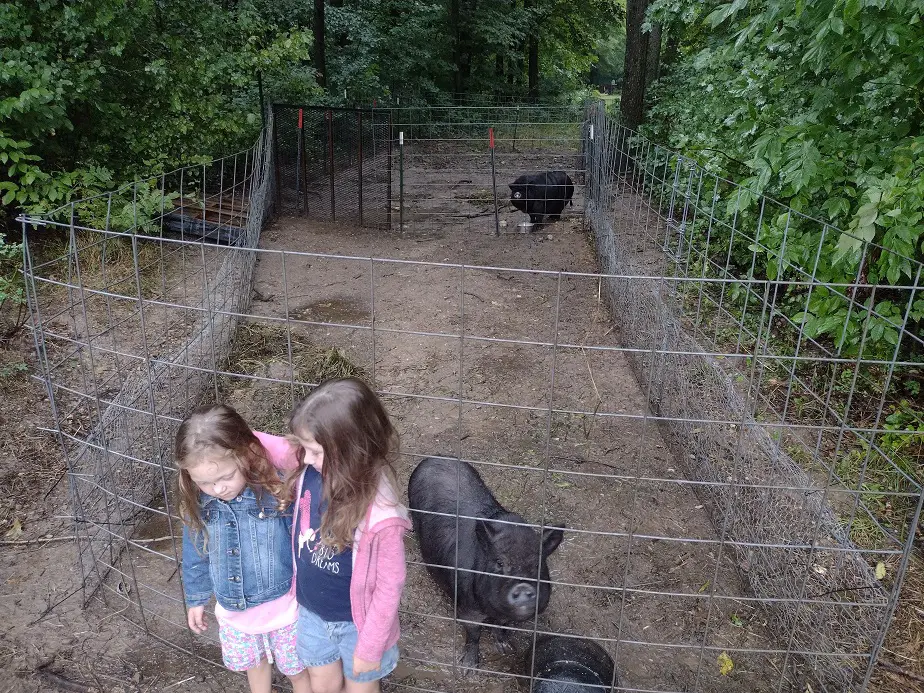
At What Age Should Pigs be Bred?
Pigs should be bred no younger than 6 months, but can become sexually active at 3 months. Sows bred under 6 months have a significantly increased risk of complications resulting in injury or fatality to the piglets and herself. Many reputable breeders wait until 9 or 12 months before breeding a sow.
There are two theories here. The commercial standard says to breed a sow at 5 or 6 months old with a 6 to 9-month-old boar. In such an operation, the sow is expected to be replaced at approximately 2-1/2 years old. Because of this, they start early.
They breed and select genetics for early sexual maturity and wide pelvic growth to make it work. They are replaced young to avoid the problems of a full-grown sow (5-6 years old and up to 1000 pounds for commercial breeds). They have increased mortality rates from crushing, and large animals damage pens.
In more traditional pig operations, a sow is kept longer and often bred a bit older. They cite an increase in litter size, less needed intervention, and a sow that keeps her condition (doesn’t lose much weight). That means the momma will have a less stressful time in recovery and will nurse better.
Both boars and sows are most fertile between 1 and 4 years old. At least, that’s the norm. Depending on the breed, a 4-year-old sow can range from 150 to 700 pounds. I personally find the smaller breeds (like Kunekune and Potbelly) to be more appropriate for the small-time pig keeper.
One of my young sows was accidentally bred at 3-1/2 months old. She gave birth to 6 piglets. It’s a small litter but they all did fine. She’s currently one of my better breeders. I’ve been told that breeding young (more of a wild breeding program) can cause a slightly shorter productive breeding life.
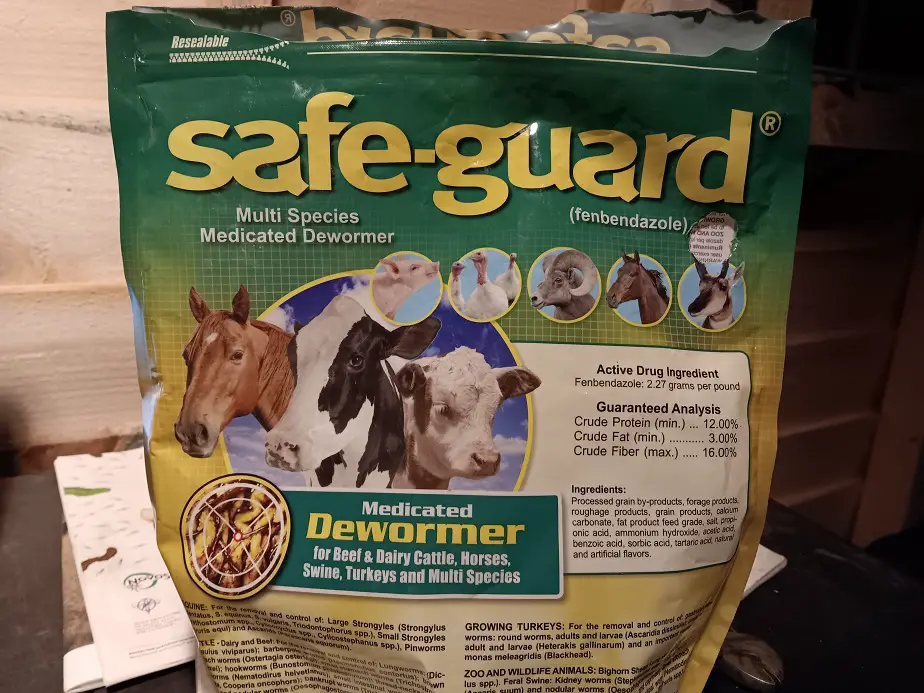
One thing you need for pigs, no matter your raising system, is a parasitic worm treatment. The best swine dewormer is Fenbendazole. It’s known by the brand name Safeguard. Safeguard is available as a medicated corn/alfalfa pellet. It’s the only way I can worm my pigs since they won’t stand still for an injection of Ivermectin. It’s easy and cheap.
- There is a stronger pellet for swine only. Here it is on Amazon
- There is a weaker pellet for general barnyard livestock, including swine. Here it is on Amazon.
I use the multi-species version because it’s what’s available in my local store and I can use it for my chickens too. It’s the most effective swine wormer and the easiest to administer. I use it on all weaned piglets and adults twice a year. Don’t go without it.
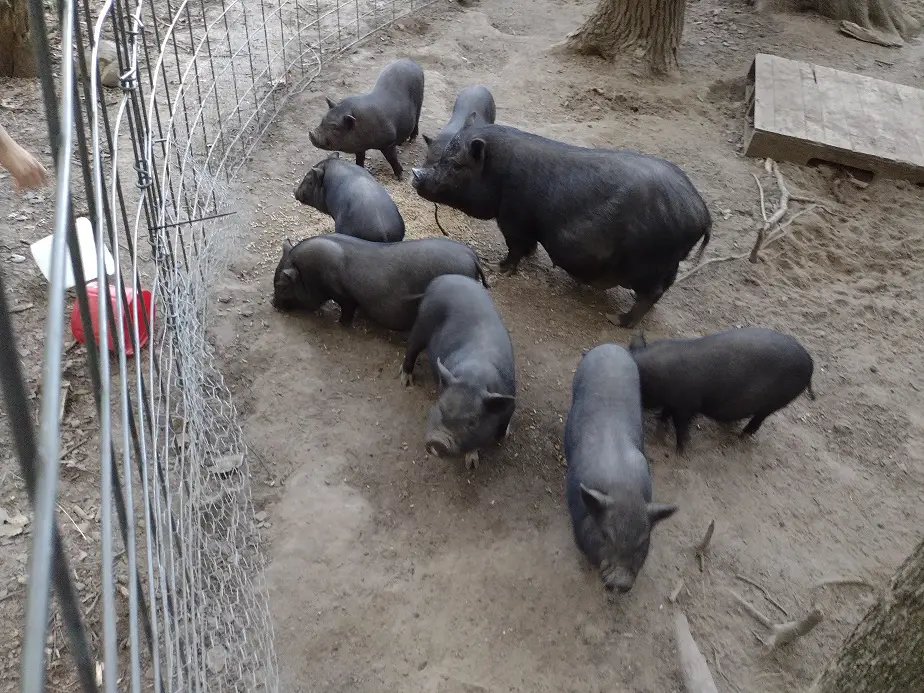
How Many Litters Can Pigs Have?
Pigs can have 20 litters, or 2 litters a year for their lifespan. Commercial pigs usually have 3 or 4 litters before being replaced. Pastured pig farmers tend to get 6 to 10 litters from a sow. Pig farmers replace a sow when she starts noticeably decreasing in efficiency.
Pigs can be bead every 6 months without any special concerns. The gestation period is about 4 months. Generally, 2 months after birth she will go into her estrus cycle and seek to be bred. Sometimes it takes a month longer if the piglets are not given a separate pen when weaned.
I plan on 2 litters a year per sow. As long as she’s a decent breeder and a good mother, she stays. We have 2 sows currently. That’s 4 litters a year. They average 8 or 9 piglets per litter so we figure 32 piglets a year currently. Unless one of them develops a serious behavioral or medical issue, I plan to keep them till 5 years old.
Preparing for Piglets
Piglets are expected to be born 115 days after mating, but that can vary by a week. 2 weeks before the expected birthing date (you better write it down) there should be a decent shelter with some nesting material. It has to be kept dry. Wet piglets are likely to get too cold or get sick.
In cold weather, you need a shelter to keep the wind out. A simple A-frame will do. Just make sure the wind can’t blow into it. If it’s extra cold, I hang a blanket over the entrance to the shelter to keep out drafts. As long as there is a clean, dry spot with nesting material, the sow will make a nice nest.
In a pasture, pigs can often collect their own materials but in cold weather, they really need some straw for a warm, dry nest. I figure 1/4 to 1/2 bale of straw per sow, and I have small-breed pigs. Once she’s nesting, leave her as alone as you can. just make sure she has good food and fresh water.
Plenty of water will help with larger litter sizes and overall litter health, as well as the sow’s nursing abilities. Pregnant sows are generally kept on a limited protein diet. A 14 percent protein feed is common but I know people who use a 12 percent.
Basically, limiting protein a bit is a common tactic to reduce mortality rates and birthing-related injuries, particularly with younger sows. It’s supposed to help ensure the piglets don’t get too big to pass through the birth canal. I don’t worry about it too much. Just be sure she is adequately nourished.
What to do when Piglets are Being Born?
You may notice your pig going into labor, or you may not. Usually, I just suddenly find a clean nest full of little piglets in the morning. It’s best to leave them alone for the first few days. The sow will be clumsy and may be easily agitated at first. getting her riled can result in a piglet getting stepped on.
That’s a serious injury often resulting in a fatality. By leaving them alone, you are helping those mothering instinct hormones to come. If a sow does have any significant problems, she’s not breeding quality and should be culled as soon as possible. Pigs should not need any human intervention to give birth.
Problems can happen but are rare. I am not alone in thinking that you need to let the sow do the job on her own, and then judge her performance after the fact. That will promote a more healthy breeding herd. Breeding in animals prone to complication is a very problematic issue. They need to be weeded through.
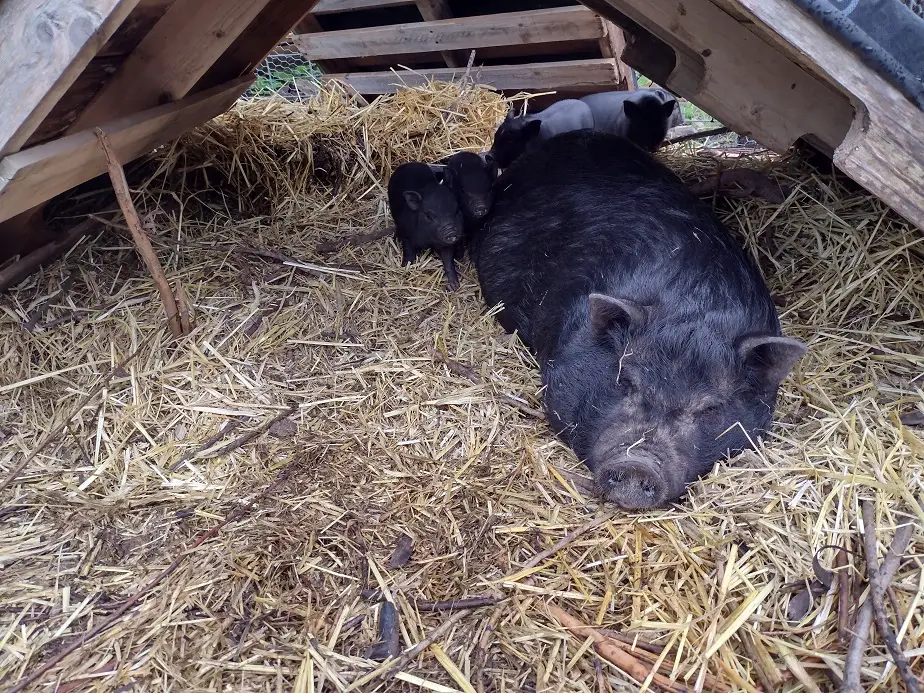
Feeding and Caring for the Sow After a Litter
If birthing was hard on the sow, she may not eat or drink well for a few days. Offer her what she needs and let her be. A regular ration can be offered to a nursing sow. Access to abundant clean water is very important in promoting kilk production.
Three other things that help a lot with milk production are extra calcium, fermented oats, and alfalfa. Oats are one of my little secrets of pig keeping. Moderately fermented whole oats increase the digestive capability of necessary vitamins and minerals, and slightly increase feed efficiency. It’s also shown to increase vigor, gain, and gut health in older piglets.
Calcium in any form helps increase milk production in mammals. That’s part of why alfalfa helps, it’s fairly high in calcium. Besides that, there are beneficial vitamins and hormone-inducing compounds in alfalfa that have been shown to increase lactation. All this may not be needed, but some of it can help.
Piglets are naturally weaned between 6 and 8 weeks old, but will try and sneak a teat until closer to 12 weeks. It’s holistically fair to separate piglets from the sow at 8 weeks old, or a bit younger if it’s a large litter. Just look for when the sow is trying to avoid nursing them.
Piglets will start nibbling on feed at around 2 weeks old. There’s no benefit in trying to limit their exposure to feed. As soon as they want it, they can start eating feed. Grains should be soaked or fermented at least in the beginning until they get used to chewing. Pelleted feed is soft enough.
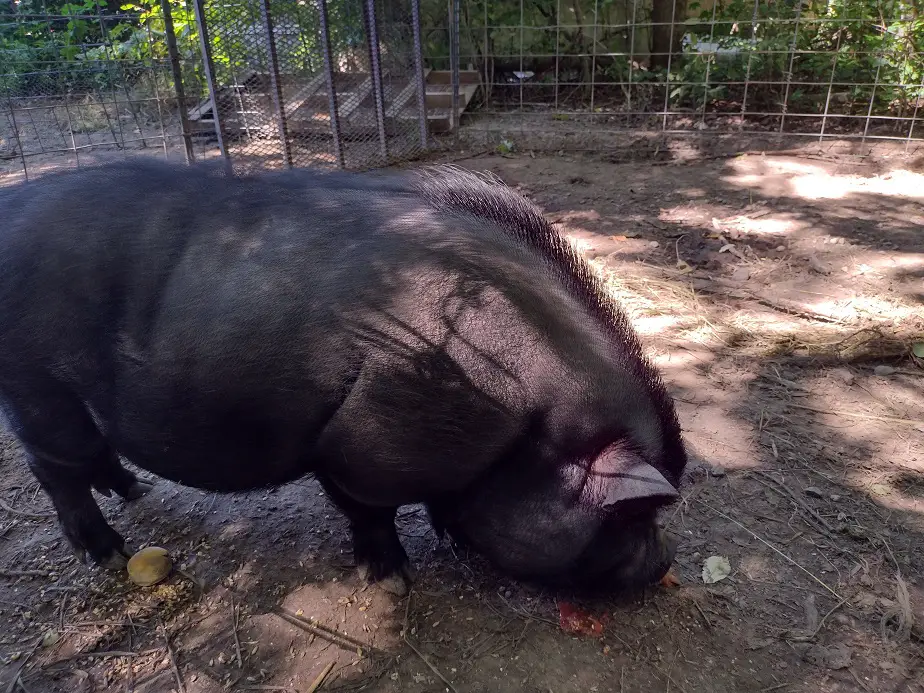
Selecting Breeding Stock
I’m not as strict as some on selecting breeders, but here’s my flowchart list of selective traits. An animal has to get past the first four to be considered, then it needs to score higher in the remaining categories to be a replacement breeder.
- Health- is the animal healthy or free of any obvious conditions, deformities, or abnormalities?
- Temperament- is the animal currently safe around me and my family? Is it content or belligerent?
- Body -does the animal have a muscular shape and form that I would like to see in butcher pigs?
- Parental instincts- Makes good nest, nurses well, protective but not aggressive.
- Fertility- lots of healthy piglets, willing to breed.
- Teats-more teats are better and benefit larger litters
One more category, but a tough one to judge, is quality of meat. This includes the amount of backfat, density of marbling, as well as the texture, color, and flavor of the meat. This is something you have to judge by the offspring.
If you notice that one particular animal has better or lesser quality meat, make a note of it. If other points of breeder selection have been met, it’s time to work on this one. It takes serious observation, note-taking, and a lot of time.
Related Articles:

